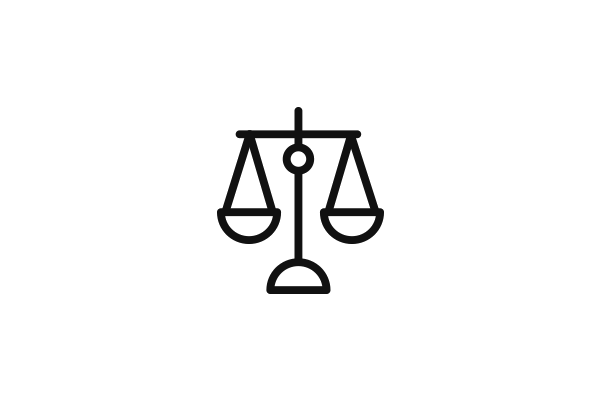Search on Youtube!
eigenlayer is
Introduction to eigenlayer
eigenlayer is a groundbreaking innovation in the blockchain space, specifically within the Ethereum ecosystem. It is a protocol that allows Ethereum validators and stakers to restake their assets onto new, emerging networks. By doing so, eigenlayer enables these networks to inherit Ethereum's security properties without requiring additional capital investment from validators. In a world where decentralized finance (DeFi) and blockchain applications are rapidly expanding, eigenlayer stands out as a catalyst for growth and security enhancement across multiple platforms.
The concept behind eigenlayer is to maximize the utility of staked assets. Traditionally, validators could stake their assets on a single network, limiting their potential returns and the overall efficiency of the network's security model. eigenlayer disrupts this paradigm by introducing a restaking mechanism that allows for assets to be staked across multiple protocols. This not only benefits validators by increasing their earning potential but also aids in the proliferation of secure and robust blockchain networks.
How eigenlayer Works
Restaking Mechanism Explained
The core functionality of eigenlayer revolves around its innovative restaking mechanism. Validators who are already staking their Ether (ETH) on the Ethereum network can opt to restake their staked assets through eigenlayer. This process involves locking up their existing staked ETH into the eigenlayer smart contract, which then allows these assets to be used to secure additional networks or services built on top of Ethereum.
By participating in eigenlayer's restaking, validators essentially extend their security guarantees to other protocols. eigenlayer smart contracts manage the allocation of these staked assets, ensuring that they are appropriately applied to secure various networks that require additional security support. This mechanism allows eigenlayer to act as a security middleware, bridging the gap between Ethereum validators and third-party protocols.
Security Implications
One of the most significant advantages of eigenlayer is the enhanced security it offers to new and existing blockchain networks. Since validators have their assets at stake across multiple platforms through eigenlayer, they are incentivized to maintain honest and reliable operations. Any malicious activity on their part could result in slashing penalties that affect their staked assets on Ethereum as well as the networks supported through eigenlayer.
eigenlayer's approach effectively leverages the robust security model of Ethereum and extends it to other protocols. This shared security model is particularly valuable for new networks that may not have the resources or validator participation levels to secure themselves independently. By utilizing eigenlayer, these networks can bootstrap their security, gain user confidence, and accelerate their development and adoption.
Benefits of Using eigenlayer
Maximizing Validator Rewards
For validators, eigenlayer presents an opportunity to maximize rewards without the need for additional capital investment. By restaking their existing assets, validators can earn rewards from multiple networks simultaneously. eigenlayer simplifies this process by managing the distribution of staked assets and ensuring that validators receive appropriate compensation for their participation across various protocols.
Moreover, eigenlayer reduces the barriers to entry for validators looking to support new networks. Without eigenlayer, validators would need to commit additional capital to stake on each new network independently. eigenlayer streamlines this process, making it more accessible and economically viable for validators to diversify their staking activities.
Boosting Network Security and Growth
New blockchain networks often struggle with security and validator participation during their initial stages. eigenlayer addresses this challenge by allowing these networks to tap into the existing pool of Ethereum validators. By leveraging eigenlayer, emerging networks can immediately benefit from a robust and trustworthy validator set, enhancing their security and attractiveness to users and developers.
This boost in security and validator support can accelerate the growth and adoption of new networks. Developers can build decentralized applications (dApps) with confidence, knowing that the underlying infrastructure is secured by a reputable and extensive validator community. eigenlayer thus plays a pivotal role in fostering innovation and expansion within the blockchain ecosystem.
Enhancing Decentralization
eigenlayer contributes to the decentralization of the blockchain space by enabling a wider distribution of security resources. Validators from around the world can participate in securing multiple networks through eigenlayer, reducing the risk of centralization that can occur when security is concentrated among a few large stakeholders. This democratization of security participation aligns with the fundamental principles of blockchain technology.
Use Cases of eigenlayer
Supporting DeFi Platforms
Decentralized finance platforms can greatly benefit from the security enhancements provided by eigenlayer. DeFi applications often require high levels of security to protect user assets and maintain trust in the platform. By integrating with eigenlayer, DeFi protocols can leverage the existing Ethereum validator set to secure their operations, mitigating risks associated with insufficient security measures.
Facilitating Cross-Chain Interoperability
eigenlayer can play a vital role in facilitating cross-chain interoperability. By allowing validators to restake their assets across different networks, eigenlayer creates a more interconnected blockchain ecosystem. Protocols that require cross-chain functionality can use eigenlayer to ensure that transactions and interactions between networks are secure and reliable.
Enabling Scalable Solutions
Scalability remains a significant challenge in the blockchain industry. eigenlayer offers a pathway to scalable solutions by providing additional security layers to networks that implement scaling technologies such as sidechains, rollups, or sharding. By securing these scaling solutions through eigenlayer, networks can achieve higher throughput and performance without compromising on security.
The Future of eigenlayer
Driving Innovation in the Blockchain Space
As eigenlayer continues to gain traction, it is poised to drive innovation within the blockchain space. Its unique approach to restaking and security provisioning opens up new possibilities for protocol design and network development. Developers can experiment with novel consensus mechanisms and network architectures, knowing that eigenlayer provides a robust security foundation.
Potential Challenges and Solutions
While eigenlayer offers numerous benefits, it also faces potential challenges that need to be addressed. One concern is the increased complexity for validators who must manage their participation across multiple networks. eigenlayer aims to mitigate this by providing tools and interfaces that simplify validator interactions, making restaking as seamless as possible.
Another challenge is ensuring that the interests of validators align with those of the networks they support through eigenlayer. Governance mechanisms and incentive structures within eigenlayer are designed to balance these interests, promoting cooperation and mutual benefit among all participants.
Community Engagement and Governance
The success of eigenlayer depends heavily on active community engagement and effective governance. Validators, developers, and users are encouraged to participate in the evolution of eigenlayer by providing feedback, contributing to code development, and engaging in decision-making processes. A decentralized governance model ensures that eigenlayer remains responsive to the needs of its community and adapts to the changing landscape of the blockchain industry.
Conclusion
eigenlayer represents a significant advancement in the way blockchain networks manage security and validator participation. By enabling restaking, eigenlayer provides a bridge between Ethereum validators and a multitude of emerging networks, fostering growth, innovation, and enhanced security across the blockchain ecosystem.
For validators, eigenlayer offers an opportunity to maximize rewards and diversify their staking activities without additional capital requirements. For network developers and operators, eigenlayer provides access to a robust security infrastructure that can accelerate adoption and user confidence. For the broader blockchain community, eigenlayer contributes to a more interconnected, secure, and decentralized future.
As the blockchain industry continues to evolve, eigenlayer is set to play a pivotal role in shaping the next generation of decentralized technologies. Its innovative approach to restaking and security provisioning has the potential to redefine how we think about validator networks and the distribution of security resources. Embracing eigenlayer could very well be a key step towards realizing the full potential of blockchain technology.











